Buzzing in the Media
The beloved honey bee is known nation-wide for its contribution to pollination and production of honey. In recent years, honey bees have also been a big buzz topic in the media, with reports that bees are dying at an alarming rate. Is the story being sensationalised? How alarmed should we be? Why are they dying? How can humans help?
The goal of this article is to provide a quick timeline of the issues, highlighting areas of controversy and elaborating on some of the main stressors that bees face today.
A brief bee history of losses, cycles and changes
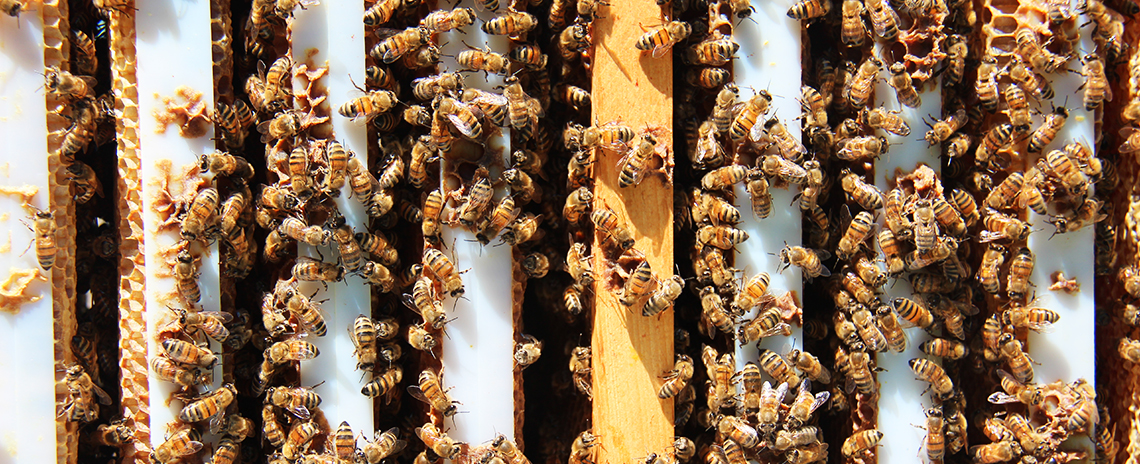
Ernesto Guzman, environmental sciences professor and Pinchin Family Chair in Bee Health, has been researching the honey bee for nearly 30 years. He explains that throughout history honey bee numbers have fluctuated in North America and the world. In fact, Guzman recalls high levels of mortality in honey bees 30 to 40 years ago, which researchers at the time termed the “Disappearing Disease”.
Fast forward to 2006 and beekeepers once again saw major honey bee declines. It was coined “Colony Collapse Disorder” in the United States to describe the strange phenomenon of worker bees leaving the hive and not returning, despite having plenty of food, resources and a healthy queen. Canadian beekeepers also experienced major losses in their colonies, but used different terms at the time.
As Guzman explains, new terms throughout recent history have been selected to bring attention to bee losses, whether it is disappearances or deaths. In his experience, losses and rebounds in numbers tend to come in cycles and waves, but in the last decade something different has been going on.
“I would call it just colony mortality or colony depopulation, which is really what you observe. That’s been going for too many years. Ten years now, in a row,” says Guzman. “When you have losses ten years in a row of 30 percent of your colonies, then something is going on.”
Before 2006, the average losses beekeepers faced were anywhere between five and 15 percent. When that number doubled, beekeepers and researchers, like Guzman, became concerned.
What’s all the fuss about? Identifying areas of controversy
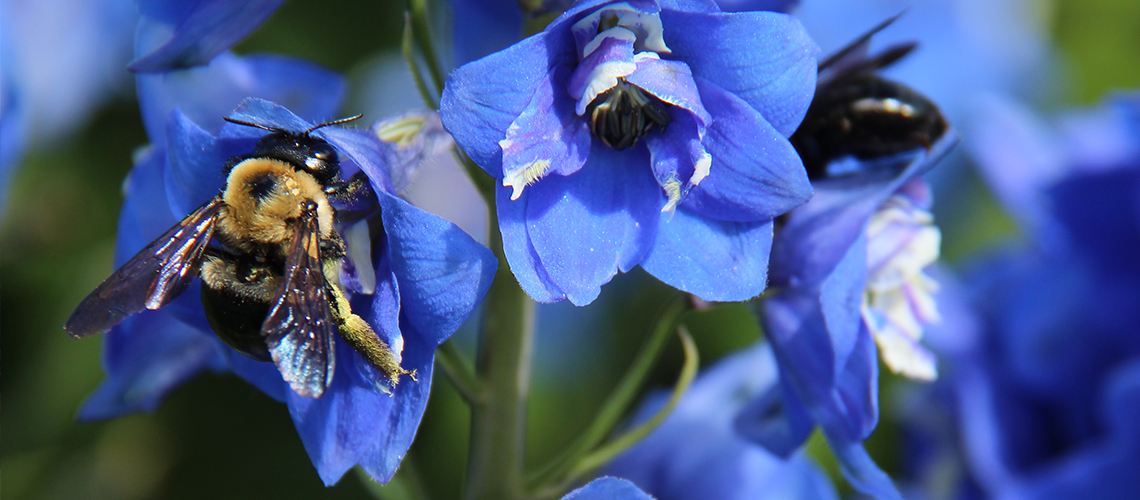
Although a single narrative or cause is easier to understand, Guzman explains that research on bees has been varied and at times even contradictory, and although the media often points fingers to one cause that isn’t the reality.
An important point to remember is that scientific studies often look at different variables and some are performed in field, while others in lab.
For example, Cynthia Scott-Dupree, environmental sciences professor and Bayer Crop Science Chair in Sustainable Pest Management, released a study in 2014 that suggested that exposure to corn grown with pesticides posed low risk to bumblebee health. In that same study however, Scott-Dupree pointed out that several other lab studies have proven that feeding bumble bees food contaminated with pesticides can adversely affect individual bees and colony development.
In the study, Scott-Dupree and her fellow researchers explained that controlled lab experiments are important to highlight potential hazard of pesticide exposure, but not risk. A hazard is something that can cause harm, but risk is the likeihood of something to actually cause harm. For example, a tiger is a hazard to humans, they have large teeth and claws and could cause major harm, but if the tiger in an enclosure, unable to reach you, the risk of the tiger is very low.
As Guzman points out, it is important to know that both field and lab studies have limitations.
He says the controversy of conflicting research results and the debate on what is causing bee deaths is rooted in the fact that “no single story will ever be perfect and no single story will give you all the answers.” But he doesn’t mind the fact that researchers disagree. “Controversy is okay. It’s natural; it’s a part of science.”
One fact that the research community does seem to agree on is that a range of environmental stressors affect bee health.
“One of the messages we want to get across is this is not a single culprit problem. This a multifactorial problem,” he explains.
Another area of agreement is the importance of pollinators, beyond the honey bee, and the need for more research, including monitoring wild pollinators, such as unmanaged bumble bees.
Three big issues facing honey bees and pollinators
So, what are the main factors affecting pollinator health?
Major changes in agriculture, climate change and habitat loss are all factors that are negatively affecting bee health, but to summarize the main issues and “clear the air”, three experts at the University of Guelph were consulted: Guzman; Paul Kelly, apiary manager at the Honey Bee Research Centre; and Nigel Raine, environmental sciences professor and Rebanks Family Chair in Pollinator Conservation.
1. A change of pace: the business of pollination
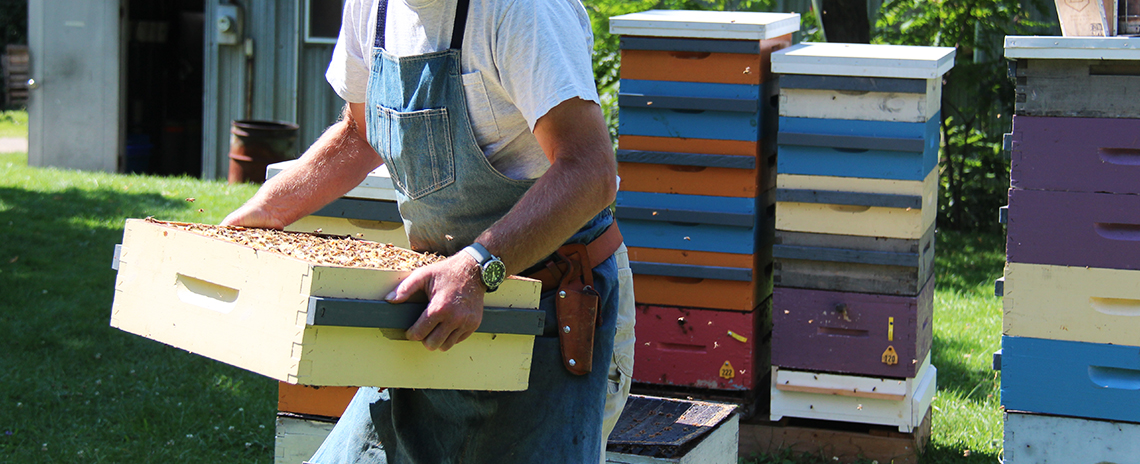
The business of pollination has evolved; in the past when honey bee hives were stationary they had a vast range of plants to choose from, providing a well-balanced diet. New management practices are causing major stress from both transportation and a lack of nutrition. These factors take a toll on the honey bee.
50 years ago, most beekeepers kept their hives stationary in one convenient location. Today most commercial beekeepers rent their hives out for pollination services. To provide this service, beekeepers will transport their bees all over the country. An example of this is the pollination of blueberries. Canada is the second largest blueberry producer worldwide, with most of the crop being produced in British Columbia, Quebec and Atlantic provinces. Since there are not enough bees in the Atlantic provinces to support the blueberry crop, they must come from somewhere else.
Paul Kelly explains that this highly valuable crop is grown commercially in both wild and cultivated varieties in Canada. Market demand and production of blueberries has boomed in the last decade, due to the fruit versatility, delicious taste and associated health benefits.
The problem is that, when in the blueberry orchards, the bees have one single food source and unfortunately, blueberry plants do not provide a well-balanced diet for the honey bee.
“It’s like eating hamburgers for a whole month, every day. You will find that hamburgers don’t provide you with the nutrients you need either,” adds Guzman.
2. Winter is coming: over-wintering deaths in bees

It’s a story that’s been told over and over. A beekeeper returns to the hive to find the majority or entirety of their hive has died over the winter. What was the culprit?
In 2008 Guzman and his research team conducted a large field study to determine what was causing the losses. They monitored the conditions of honey bee hives located across Ontario, during different times of the year and focused on multiple factors which they hypothesized to be the source of the loses. Some of these factors included the presence of multiple different pathogens: tracheal mites, the Nosema apis fungus and varroa mites.
The study correlated the presence of the varroa mite and other pathogens, with colony mortality, colony depopulation and colony growth. They found that 85 percent of the cases with large winter mortality were associated with varroa mites.
The varroa mite, a relative to spiders, is a large external parasite that feed on the body fluid of bees. This parasite was first reported in Canada in 1989. Varroa mites weaken honey bees, cause physical damage and transmit disease. Today they are found in almost all honey bee hives.
Varroa are completely dependent on honey bee colonies for survival and reproduction. Parent varroa will enter the brood cell, where young bees are developing to lay her eggs. The offspring will then feed and develop within the cell of the developing honey bee and emerge with them.
In Guzman’s study, the honey bee colonies with above average populations, large food reserves and no traceable varroa mites had colony losses of just 3 percent. Colonies with low populations and traces of varroa, had over-wintering losses of 30 percent or more.
He admits that there could have been other factors that affected the bees, but explains the effects would have been minimal. In his opinion, his extensive research strongly points to the fact that in winter, the largest killer of the honey bee in Ontario is the varroa mite.
However, spring is a different story.
3. Spring had sprung: a new season of threat to honey bees
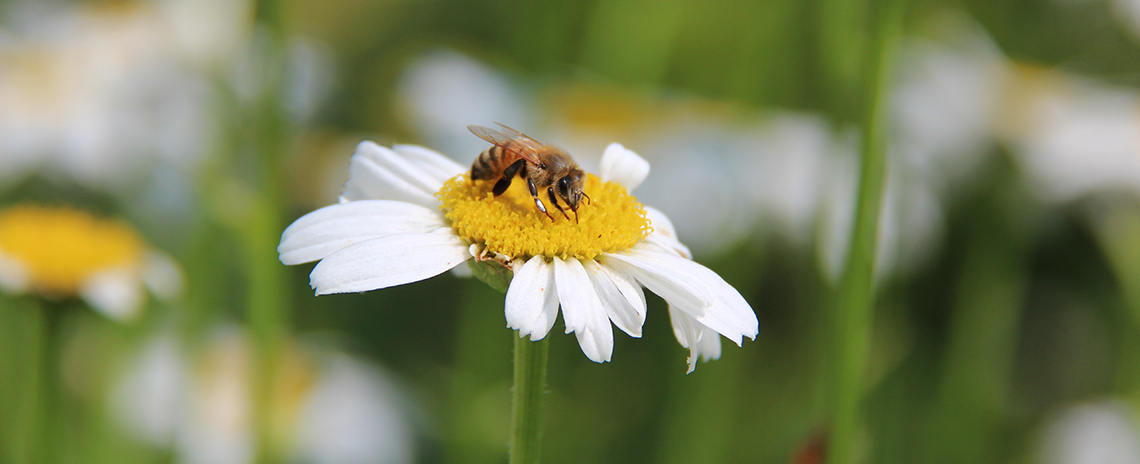
Spring conditions are prime for the honey bee, temperatures are increasing, the days are longer and the flowers are beginning to bloom, which means plenty of food sources for bees. Even if hives are dealing with the varroa mite and other pathogens, the immense number of bees being bred should offset the losses. It should be a time of thriving. Beginning in 2006 in Ontario, however, bee keepers were experiencing significant losses in spring.
They reported that a large number of their bees were dying when located next to fields planted with corn and soybeans and by 2012, the federal Pest Management Regulatory Agency reported that approximately 70 percent of the dead bees, tested positive for neonicotinoid (neonic) insecticides.
Neonics are a class of insecticide, a substance used to kill insect pests, that has a chemical structure similar to nicotine. It is used to control insect pests on agricultural crops, domestic lawns, green houses, and in urban forestry. Its mode of action is to affect the central nervous system of insects, resulting in death. Neonics are absorbed by plants and spread throughout, harming insects feeding on them. This type of insecticide is frequently used because they have been found to be harmless to humans and other mammals.
In the agricultural context neonics are used as a coating on the seed of certain crops. Prior to 2015, close to 100 percent of corn and 65 percent of soybean seeds in Ontario were treated with neonics.
An issue with using this seed coated insecticide is that talc is used as a lubricant in the seeding process. As the seeds are planted and travel through the seeder, the talc dust produced from this process has high traces of neonics. This dust creates clouds that blow onto vegetation that is visited by bees.
Raine’s research has found that although field exposure to neonics might not kill a bee, it can affect bee health and needs to be researched more.
“If you have a couple of glasses of wine that’s not going to necessarily kill you, but it will significantly affect your ability to perform normal behaviours,” he explains.
One of Raine’s research goals is to discover how these low levels of exposure to neonics affect the health and behaviour of pollinators. He and his research team recently released a study that showed that bumblebee queens exposed to neonics are less likely to start a colony by more than 25 percent.
Raine explains that reductions this large could have a detrimental effect on bumble bee populations.
Something to look forward to
As researchers begin to understand these three factors more, it’s good news for all pollinators. With more information, comes the ability to mitigate and lessen these stressors. Researchers at the University of Guelph are staying optimistic as they continue to dive deeper into these pollinator issues.
A current project Guzman is working on looks at the impact of three different factors at the same time: varroa mites, insecticides and the foul winged virus (passed on through varroa). The study is looking at these factors on an individual scale and combined scale. Guzman and his team have a field component and a lab component and expect results to be released in the near future.
To find out more about what is affecting the honeybees and wild pollinators, and how you can support and conserve them, take a look at the recent University of Guelph report on the Status and Trends of Pollinator Health in Ontario.
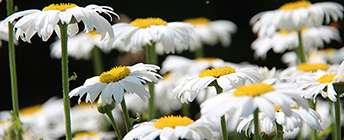 |
Read more:"Helping Ontario's Pollinators: Things you can do"
|
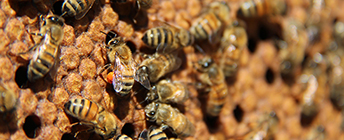 |
Read more:"Meet Ontario's Pollinators" |